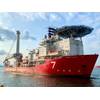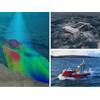Proteus FZC is now offering a daily Water Quality Monitoring service for the Arabian Gulf. Derived from NASA satellite data, the new service provides daily online access to reports on six water quality parameters at 250-meter to 1-kilometer spatial resolution.
“We can further improve the accuracy of the standard NASA data by calibrating each data set to local water conditions,” said Proteus CEO David Critchley. “The easy-to-read reports are available online or can be delivered in PDF formats via email.”
Proteus now offers the daily service for organizations responsible for monitoring and maintaining the condition of coastal and offshore waters – environmental agencies, energy producers, desalination operators, marine engineering firms, and dredging companies.
“If an offshore infrastructure construction project is responsible for excessive water turbidity, the engineering company has to remediate the problem quickly,” said Critchley. “Likewise, desalination and power plants need to take precautionary actions if too much suspended sediment or sudden algal blooms are spotted near their operations.”
The daily water quality reports are derived from processed data collected by the MODIS (Moderate Resolution Imaging Spectroradiometer) sensors which fly aboard the orbiting NASA Terra and Aqua satellites.
“The sensors typically provide water quality details to a depth of three meters, depending on water column clarity,” Critchley said.
The daily water quality reports provide the following information:
- Total Suspended Sediments (mg/L) at 250-meter resolution
- Chlorophyll-a Content (mg/m3) at 1-km resolution
- Sea Surface Temperature (degrees C) at 1-km resolution
- Turbidity or Fluorescence Line Height (mW/cm2/µm/sr) at 1-km resolution
- Diffuse Attenuation Coefficient (m-1 at 490 nm) at 1-km resolution
- True Color Composite (image) at 250-meter resolution
The 250-meter resolution is very suitable for marine monitoring as it enables data collection for the entire Gulf region several times per day. When the regional 250-meter resolution MODIS-derived product reveals a water quality anomaly or if increased spatial detail is required, Proteus water quality customers have the option of requesting higher-resolution reports processed from other satellites that can map events in more detail.
“We will soon expand the daily water quality monitoring service to ice-free oceans, seas and large lakes worldwide,” said Critchley.
• 















 February 2024
February 2024



